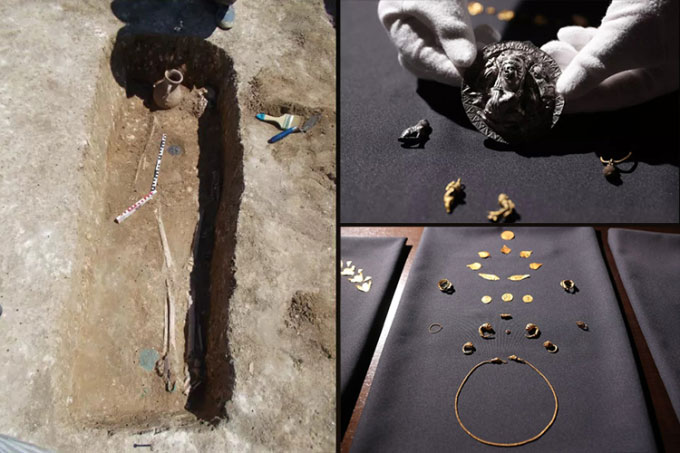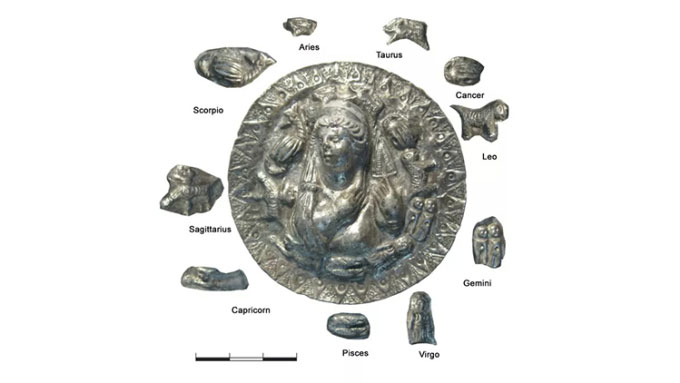Russian archaeologists have discovered a medal featuring the symbol of the Greek goddess during the excavation of a tomb near the Black Sea.

The ancient tomb, 2,100 years old, contains many artifacts related to the goddess Aphrodite. (Photo: Nikolay Sudarev/Oleg Deripaska Volnoe Delo Foundation).
This tomb is one of the most significant discoveries made at the ancient city of Phanagoria located on the Taman Peninsula, situated between the Black Sea and the Sea of Azov, according to Nikolay Sudarev from the Russian Academy of Sciences, a member of the excavation team.
Based on a variety of artifacts found, including rings, earrings, jewelry, personal items, and notably a silver medal featuring a relief depiction of the goddess of beauty, Aphrodite, from Greek mythology, researchers believe that the tomb belonged to a woman who worshipped Aphrodite.
“I would not call this person a ‘priestess,’ but her burial seems to be related to the veneration of Aphrodite,” Sudarev told Live Science on October 27.
In addition to the portrait of the Greek goddess, the medal also features 10 other relief symbols corresponding to the 10 zodiac signs. Compared to the current system of 12 zodiac signs, the research team noted the absence of Aquarius and Libra, but the reason remains unknown.

10 zodiac symbols surrounding the portrait of the goddess Aphrodite. (Photo: Deripaska Volnoe Delo Foundation).
The presence of zodiac signs on the medal depicting the goddess Aphrodite indicates that the people of Phanagoria at that time believed in astrology, with the idea that celestial bodies could influence events on Earth.
“This is one of the earliest descriptions of zodiac signs in the ancient Greek world,” Sudarev emphasized.
According to the ancient historian Hecataeus, the ancient city of Phanagoria was established in the 6th century BC by refugees from Teos—a Greek city on the coast of Anatolia (modern-day Turkey)—after it was plundered by the Persian king Cyrus around 540 BC.
This new discovery adds to the significance of archaeological projects in Phanagoria. The research team is also expanding underwater excavations as one-third of the ancient city has been submerged.


















































